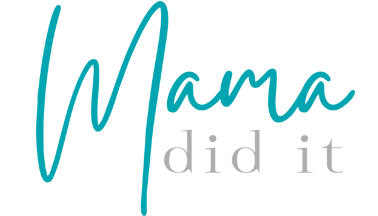Yes, you can safely run after having a baby, but there is an important process as you begin again. Here’s how to return to running postpartum in a kind way.
Let me go ahead and give the disclaimer that running isn’t recommended in the first few weeks postpartum. There are risk factors when postpartum runners begin too early. But there are movements you can do to prepare your post-baby body for running. These movements help proper healing and body alignment, so when you feel ready to run, your body will be too. Here’s how to return to running postpartum.
If you are used to running, especially if you have been able to run throughout pregnancy, it can be hard to take a break. Runners, when not running consistently, can quickly lose their progress. This can feel disheartening after so much hard work, but rest assured, your muscle memory will kick back in. What is temporarily lost will not stay lost forever.
What is the Pelvic Floor and Why it Matters
The pelvic floor is a sling-like muscle in the pelvis that supports your bladder and other internal organs. As your baby descends in the birth canal, they use the feeling of the pelvic floor to navigate their way through. Ideally, our pelvic floor is supple and easily allows for our baby’s journey. Too loose and your baby may not position ideally. Too tight and they may have trouble descending into the birth canal.
Runners typically have a tight pelvic floor. This can lead to labor stalls and more pelvic floor work and injury. After all is said and done, our pelvic floor goes through a lot to help our babies enter the world. It needs time to heal and recover, just like any other muscle would. As it recovers, you may experience urinary incontinence. This should be temporary. If it continues for any length of time, it can be a sign that our pelvic floor needs some strength training.
Should you see a physical therapist?
I highly recommend a pelvic floor physical therapist during the postpartum period. Most professional therapists like to start physical therapy (pelvic floor pt) at one and a half months postpartum (6 weeks) unless you are experiencing extreme diastasis recti, pelvic organ prolapse, pelvic pain, or intense low back pain.
A physical therapist will help you recover your pelvic floor muscles, restore your soft tissue, aid in healing abdominal separation, and help with symptoms of pelvic floor dysfunction. After a vaginal birth, no matter how straightforward it is, pelvic floor issues can occur. The pelvic floor plays an important role in getting your baby through the birth canal, and it needs some recovery time. A pelvic floor physical therapist is a pelvic floor specialist, and they can help get you ready for that first run.
How to Return to Running Postpartum
One way to tell that your pelvic floor may need recovery is if you are having bladder leakage. Urinary incontinence is a sign that your pelvic health may be compromised. This is when the bladder leaks involuntarily. This may happen when postpartum women laugh, sneeze, jump, or run. Although this can be normal after the first couple days of having a baby, beyond that can indicate a need for attention to the healing process of pelvic floor health. New moms don’t have to simply live with “mom bladder.”
Diastasis recti that doesn’t heal quickly is another indicator that you would benefit from a physical therapist. When the abdominal wall separates during pregnancy, this is called diastasis recti. It’s a condition that can be prevented with proper physiology throughout pregnancy, but it also can be healed in new mothers. The following exercises can help.

Why does running hurt postpartum?
Running is considered a high impact exercise. According to Thrive Physio Plus, “After having a baby, the pelvic floor is weakened and often injured, particularly with vaginal delivery. High-impact exercise such as running causes an increase in intra-abdominal pressure, meaning there’s more force being placed through the already weakened pelvic floor than lower impact activities.”
If it hurts while running, you may need to give yourself more time to heal, incorporate low-impact exercises like those listed below, or see a pelvic floor physical therapist.
How to Return to Running Postpartum
The following exercises will help your body get back to running more quickly. Most medical professionals agree that these are safe to do within the first few days of giving birth. Never go against your body’s intuition. If you feel you aren’t ready for certain moves, or if you are having pain when doing them, then stop. Allow yourself more healing and recovery time, and then try again.
If you are feeling a lot of pressure to “bounce back,” ask yourself why. We need to be kind to our bodies and offer them grace after all they just triumphed through. And I encourage you to remember, our body didn’t get to this state overnight, and it certainly won’t go back overnight. We give ourselves nine months to grow and birth a baby. Let’s give ourselves at least the same to fully recover.
This isn’t an excuse to “be lazy,” or “let yourself go.” I am a big proponent of taking care of ourselves. We are valuable and worthy of feeling our best. Plus, If we don’t care for ourselves properly, then we are unable to care for others properly. The trick is finding balance, and figuring out what we need while sifting out the pressures of being a”milf.”
Are you looking for ways to increase your milk supply that works? Here are my 12 Proven Ways to Increase your Milk Supply as seen on Fox News.
How to Return to Running Postpartum
Here are 7 low impact exercises that will prepare you for high impact activities like a long run.
Walking
Most health care providers will give a green light for walking right away. They agree that when you feel up to walking, you may do so. Start slow. It’s not about reaching a certain distance. It’s about allowing your abdominal wall to heal, adding movement to those hip flexors, increasing your heart rate, and strengthening your muscles.
Mindful walking is important for proper alignment and tendon extension and flexion. No slumping. Be sure to be looking straight ahead, shoulders dropped, arms swinging, heel, ball, toe, heel, ball, toe. It’s one of the best exercises for your body that you can do! It also can make a huge impact on your mental and emotional health.
Pelvic Tilts
Before running for the first time work on pelvic tilts. Pelvic tilts work to realign your pelvis, strengthen your core muscles (like your lower abdominal wall), and strengthen your lower back. Pregnant women can also do pelvic tilts as long as they aren’t laying flat on their backs. A good idea in pregnancy is to use the hands and knees position. The pelvic tilt is a great beginner exercise to prepare for high-impact activity.
While laying flat on your back, bring your knees up pointing towards the ceiling. Inhale and exhale deeply. Sink your belly button into the floor. On exhaling, draw your pelvis up towards your chest, while keeping your low back plastered to the floor. Release as you inhale. Repeat ten times, and add more repetitions as you are able.

Kegels
Kegels were all the rage, but have slowly gotten a bad rap. However, Kegels are beneficial when done properly AND when we also work to counter the kegel by relaxing the pelvic floor. So why did Kegels fall out of favor? Because doing Kegels alone can overly tighten the pelvic floor leading to its own set of issues. The goal is not a super tight pelvic floor but a supple pelvic floor. To achieve this, we do Kegels, but also relax the muscles once a kegel is complete. The Kegel will prepare your pelvic floor for high impact exercise like a running routine.
Kegel’s aid in pelvic floor muscle strength for new mothers. While lying flat on your back, slide your heels towards your bottom while your knees are pointing to the ceiling. Inhale deeply. Upon exhale, imagine trying to pick up a blueberry with your vagina. Draw those muscles up and in. Are your butt and thighs relaxed? Upon inhale, place the blueberry back down to relax the pelvic floor. Do this 5-10 times daily if possible.
How to Return to Running Postpartum
When the above exercises become routine and easy, start these low-impact, but challenging activities. Even adding ten minutes of moderate physical activity can add recovery and strength to the female body. Start with a goal of ten minutes.
Basic Yoga Flow
Yoga flows work to strengthen and stretch your entire body. It is considered low impact, kind to your recovering body, and yet challenging. When it’s time to strengthen and begin training again, yoga is a great start. Yoga began as a spiritual practice in the middle east. It has since evolved into more of a mental and physical practice that challenges the full body and mind. Here’s a favorite of Yoga with Kassandra.
Beginners Pilates
I am a personal fan of pilates. Almost anyone can do pilates. It uses mostly body weight to strengthen, stabilize, and add flexibility throughout the body. Pilates advocates deep, conscientious breathing, while incorporating muscle movement from the core. For the postpartum woman who is re-training her core, pilates may be a perfect fit. Here’s a favorite.
Upper Body Workout
You can begin strengthening your upper body soon after birth. Finding a basic arms workout can help get your heart rate up while engaging your upper body muscles. Your own arm weight may be enough for an adequate workout. If not, try light dumbbells or even soup cans. Here’s a favorite with Fitness Blender.
Run-Walk Intervals
When you have mastered some of the other exercises in this list, and feel you are ready to be challenged, start with run-walk intervals. Not only will it begin your cardio training for a long run, but it can also aid in the strength of your pelvic floor. Start with small intervals: two minute walk, two minute run, then walk out the rest of your exercise. If you don’t experience discomfort or bladder leakage, double your time. Continue this pattern until you are back to where you desire to be.
Does the type of birth matter?
Whether you had a cesarean section or a vaginal delivery, most health care professionals advise waiting until your 6-week postpartum doctor’s visit to begin high impact sports, like running.
I would like to elaborate on this and say, that it isn’t good for anyone’s body to go from zero activities for six weeks to high intensity exercise. If you plan to run again as soon as that six weeks hit, please be working on low impact activities in the meantime. All of the exercises listed above are great options.
Overall, a c-section does not cause as much pelvic floor work or injury as a vaginal birth. But this can depend on if the mother labored, how far she got in labor, and if she spent any time pushing. If you had a straightforward, scheduled c-section, chances are you may find a smoother transition for your body when you get back to running.
Will running hurt my milk supply?
It shouldn’t. Many mothers find they can exercise with no issues to their milk supply. Keep in mind that you need 500 extra calories per day while nursing your baby. If you are burning a lot of calories during running, make sure you are replenishing those with a good protein shake or protein-rich foods. And possibly even more importantly, hydrate. One of the biggest milk decreasers is dehydration. If you take care of your calories and your liquids, your breastmilk supply should be unaffected.
Looking for a protein powder that fits the needs of a breastfeeding mom? Here are the Best Protein Powders Safe for Breastfeeding Moms.
Disclaimer: As always, check with your healthcare provider before performing any new exercises.
Post may contain affiliate links
